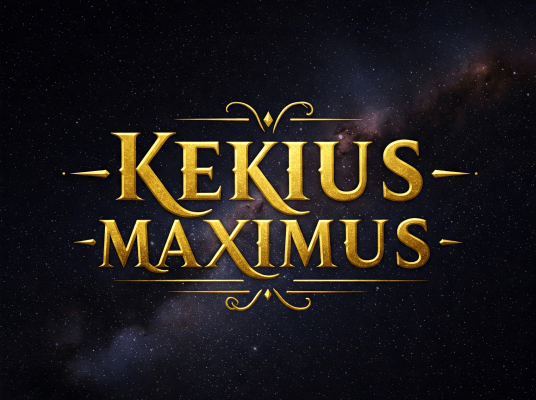Plus: Nothing confirms over-ear headphones, there’s a new Xperia phone, and a striking transparent turntable from Audio-Technica catches our eye.
All products featured on WIRED are independently selected by our editors. However, we may receive compensation from retailers and/or from purchases of products through these links.
Global Accessibility Awareness Day was Thursday, so it’s fitting that both Apple and Google have announced a raft of new accessibility features for their devices this week, all slated to land in the coming year.
Photograph: Apple
First up, let’s talk Apple. The headline is Magnifier support for Mac. This is integrated with Accessibility Reader, so you can use your iPhone camera to zoom in on a distant whiteboard or sign and magnify it on your MacBook screen, tweak contrast and colors to make it more legible, or extract the text into your preferred format.
For deaf and hard-of-hearing people, Apple has beefed up Live Listen by adding Live Captions support and extending it to the Apple Watch. You can use your iPhone’s microphone to boost audio for AirPods or hearing aids with Live Listen, but with Live Captions, you can get instant transcription on your wrist. The Apple Watch can also serve as a remote control for capture, so you can leave your iPhone close to the speaker (ideal for a meeting, classroom, or lecture hall). You can also rewind if you missed something and review the transcript later.
Other noteworthy additions include Braille Access, which turns your Apple device (iPhone, iPad, Mac, or Vision Pro) into a braille note taker, enhanced eye and head tracking for iPhone and iPad, plus new Accessibility Nutrition Labels in the App Store, which will allow people to see at a glance what accessibility features an app or game supports. You can find the full list on Apple’s website. —Simon Hill
Google Has Accessibility Updates for Android and Chrome
Photograph: Google
Google’s accessibility update focuses in on existing Android and Chrome features, as well as some new ones aimed at Chromebooks in the classroom.
The relentless drive of AI has seen Google’s Gemini enhance several existing services like Android’s Talkback screen reader, which offers AI-generated descriptions of images for low-vision and blind folks. The company is expanding that integration, so you can now ask questions about those images, perhaps the material of a pictured dress or learning the make and model of a car. Google is also relying on AI to enhance its Expressive Captions to convey more emotion and tone.
Improvements to the Chrome browser enable you to use your screen reader to interact with PDFs to read, highlight, search, and copy text just as you would with any other page. Page Zoom has also been improved for Chrome on Android, so you can increase text size without affecting the webpage layout and customize your preferred zoom levels for different pages, bringing it into line with Chrome on desktop.
For students using Chromebooks in the classroom, Google has enabled hands-free navigation with Face control, which uses the webcam to track facial movements. The caret browsing setting enables folks with visual impairment to navigate and interact with web pages using a keyboard instead of a mouse. ChromeVox is a built-in screen reader that can read onscreen text aloud and will soon be able to output audio captions in braille when the Chromebook is connected to a braille display. Chrome also now features more natural-sounding voices for text-to-speech.
Finally, the College Board’s Bluebook testing app (where students can take the SAT and Advanced Placement exams) can access all of Google’s built-in accessibility features, including ChromeVox, Dictation, and the College Board’s digital testing tools. —Simon Hill
Watch Out Sonos! WiiM’s First Smart Speaker Is Here
Photograph: WiiM
Ever since Sonos bungled its app update last year, Sonos stans have been clamoring for a whole-home streaming alternative that reliably works. Chinese audio brand WiiM makes easy-to-use audio devices that support virtually every major streaming service. I’ve been enjoying the company’s streaming player and stand-alone streaming speaker for months, with no issues playing music in different zones, starting Spotify jams with my wife on her phone and me on mine, and generally imbuing our home with music.
WiiM’s latest is a smart speaker and wireless subwoofer that can take your system to the next level. The speaker, called the Sound, looks remarkably familiar to anyone who has seen an Apple HomePod and features a small, round display on the front to help you know when it’s listening (and what is playing). It’s capable of a room-filling 100 watts of sound and can be configured as a stereo pair if you have two. The subwoofer adds a bit of low-end extension and should be great for folks who want to use this system to fuel a dance party.
In addition to the two speakers, WiiM also announced a new streaming amp called the Amp Ultra which features a touchscreen and large physical volume knob. It looks like a great, affordable competitor to options from Cambridge Audio, Naim, and others. This amp has a dedicated subwoofer output and HDMI, so you can use it and your new subwoofer with your TV too. –Parker Hall
Sony Is Back With Another Xperia
Photograph: Sony
Sony hasn’t sold an Xperia smartphone in the US for two years, which doesn’t seem to be changing with the new Xperia 1 VII. The niche, expensive flagship Android phone continues the design language of previous Xperia devices, while combining the prowess of Sony’s various hardware brands, from its Bravia TV and Alpha camera teams to the Walkman music department. For example, the new Xperia adds an artificial intelligence-powered Auto Framing mode to recognize humans during video capture—it records the whole scene, but it’ll also provide a cropped close-up view of the person, so you can intermix footage despite using one camera.
From the Walkman team, Sony says the Xperia now has “high-quality sound components,” from adding gold to the solder on the audio jack to minimize transmission loss to upscaled music quality with DSEE Ultimate support. The phone’s speakers have also been upgraded, with better treble and mid-bass output.
The Xperia 1 VII has flagship specs like any other high-end Android, from the Snapdragon 8 Elite chipset to 256 GB of internal storage. However, unlike the competition, Sony’s phone retains the microSD card slot for storage expansion and still has a headphone jack. It’s available in the UK and Europe for £1,399 (€1,499).
Nothing Teams Up With KEF, Confirms First Over-Ear Headphones
Nothing announced this week that it is working with British hi-fi wizards KEF on “several acoustically co-developed” audio products that it said are already in progress and launching later this year. A few days later, it dropped a video on its YouTube channel announcing it was releasing its first pair of over-ear headphones this summer. The KEF partnership wasn’t mentioned directly, but it feels safe to assume it is probably involved.
Some of the things the designers seem keen to address in the forthcoming cans include a better, easier-to-use design, more interesting and unique features, and a cheaper price than comparable headphones—all with a “better than AirPods Max” performance. Amen. —Verity Burns
Audio-Technica Debuts a Transparent Turntable
We can see right through Audio-Technica’s new turntable. Quite literally. Unveiled at High End Munich this week, the AT-LPA2 transparent deck has been labeled as the brand’s “finest turntable yet,” delivering not just a striking design but the promise of a high-end analogue performance too. That’s helped by a number of features—the acrylic platter and chassis aim to provide top-notch resonance control and minimize unwanted vibrations, there’s an optical speed sensor positioned under the spindle for ensuring the most accurate playback speeds, and an external power supply to prevent any electrical interference affecting the turntable’s sensitive audio components.
The AT-LPA2 will also come fitted with Audio-Technica’s well-regarded AT-OC9XEN dual moving coil cartridge alongside a newly designed straight carbon-fiber tonearm and adjustable anti-skate mechanism. The interchangeable 110-gram and 130-gram counterweights should allow for broader cartridge compatibility, futureproofing it should you ever want to upgrade. It’s available now for $2,000 (£1,699). —Verity Burns
Huawei Unwraps Sleek New Wearables
Photograph: Simon Hill
Folks in the UK may be interested in Huawei’s new wearable lineup (they won’t come to the US). I’ve been wearing the headline-grabbing Huawei Watch 5 for the past few days, a luxurious new entrant to the smartwatch scene with a sleek design that combines sapphire glass with titanium or stainless steel. It runs Huawei’s HarmonyOS but also works with Huawei’s app on Android or iOS to bring notifications to your wrist (there’s even an eSIM option). It boasts solid health and fitness tracking, partly thanks to a pressure sensor you can press with your other fingertip for ECG and PPG measurements, making it easy to track your heart health and blood oxygen levels. The display is nice and bright, and I’ve been getting around three days between charges with it set to always-on. (You can get around a week with it off.)
Elsewhere, the Huawei Watch Fit 4 and 4 Pro are the more affordable entries in Huawei’s smartwatch lineup. With a rectangular design reminiscent of the Apple Watch, they mix sapphire glass and an aluminum body with a titanium alloy bezel. They look nice, but the thick bezel around the screen detracts a little from the design, and it’s not very responsive, sometimes needing a couple of taps or swipes. Both are solid fitness trackers, but the svelte (9.3-mm) 4 Pro adds water sports tracking and a new Air Pressure Sensor. Neither requires daily charging, and they are relatively affordable.
Huawei also announced open-fit earbuds, the FreeBuds 6 and the MatePad Pro 12.2-inch 2025, an OLED tablet that can be paired with Huawei’s Glide Keyboard. The Huawei Watch 5 (£400), Huawei Watch Fit 4 (£150) and 4 Pro (£250), and the Huawei Freebuds 6 (£140) are available now. There’s no word on the price or release date for the tablet. —Simon Hill
Rewind’s Boombox Is a Modern Twist on an Old Classic
Photograph: Rewind
French retro tech brand Rewind is releasing a boombox to sit alongside its excellent Walkman-style portable cassette player. In advance of its debut at the High End audio show in Munich, the company posted a video of the new GB-001 earlier this week—the GB apparently, and rather questionably, standing for “Ghetto Blaster” if the original, now deleted Instagram post is anything to go by. It’s a single-deck device with clean lines that showcase two bright, backlit VU meters. There are four speakers onboard, with the company aiming for a neutral sound rather than an 1980s-style bass monster. The GB-001 will also function as a Bluetooth speaker and has battery power. —Martin Cizmar
Google I/O Is Almost Here
Google I/O, the annual developer conference where we learn what’s new from the search giant, kicks off on May 20 in Mountain View, California. (You’ll be able to stream it here.) We’re expecting to hear about the company’s mixed reality plans at the show, but Google made several announcements this week. That includes a new design language for Android and an expansion of the Gemini assistant onto new platforms like Wear OS and Android Auto. Google’s Find My Devices app is also rebranding to Find Hub, since it’s now more than just a tool to find lost gadgets. You can read more about these updates here.
Android is also getting some fancy new security and privacy boosts. For example, Google is expanding its Scam Detection AI tool in the Google Messages app to flag more types of digital fraud, and there’s a new Advanced Protection mode in Android 16 that offers extra security for at-risk users.




